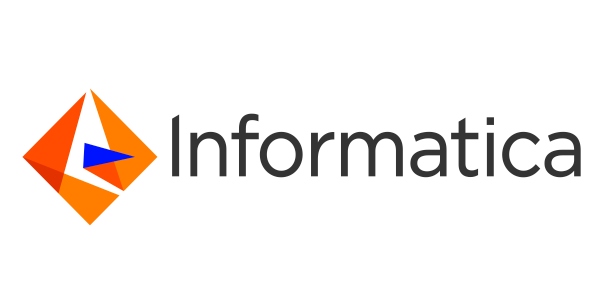SAP API Management
Filter By
Browse By
- SAP Analytics and AI
- SAP Application Development and Integration
- All SAP Application Development and Integration
- SAP ABAP
- SAP ABAP Development Tools
- SAP ABAP Test Cockpit
- SAP API Management
- SAP BAPI
- SAP Basis
- SAP BRF
- SAP Business Application Studio
- SAP CMS
- SAP Design Studio
- SAP Development Tools
- SAP DevOps
- SAP EAI
- SAP EDI
- SAP Extension Suite
- SAP Fiori
- SAP Fiori Elements
- SAP Integration Suite
- SAP Low Code Application Development
- SAP Low Code Automation
- SAP Netweaver
- SAP Release Management
- SAP UI5
- SAP Web Application Server
- SAP Web IDE
- SAP Business Process Management
- SAP Center of Excellence
- SAP CIO
- SAP Customer Experience
- SAP Data and Data Management
- All SAP Data and Data Management
- SAP BW
- SAP BW/4HANA
- SAP Crystal Reporting
- SAP Data Archiving
- SAP Data Center
- SAP Data Governance
- SAP Data Integration
- SAP Data Migration
- SAP Data Quality
- SAP Data Services
- SAP Data Strategy
- SAP Data Visualization
- SAP Data Warehouse Cloud
- SAP DMS
- SAP Document Control
- SAP EIM
- SAP ETL
- SAP ETL Tools
- SAP HANA
- SAP HANA Administration
- SAP HANA Deployment Infrastructure
- SAP HANA Studio
- SAP Master Data
- SAP Master Data Governance
- SAP MDM
- SAP Enterprise Architect
- SAP Enterprise Asset Management
- SAP ERP
- SAP Finance
- All SAP Finance
- SAP Accounting
- SAP AR AP
- SAP Asset Accounting
- SAP Billing Systems
- SAP BPC
- SAP BRIM
- SAP Cash Management
- SAP Central Finance
- SAP Controlling
- SAP COPA
- SAP Cost Center Accounting
- SAP e-invoicing
- SAP FICO
- SAP Finance Automation
- SAP Financial Closing Cockpit
- SAP Financial Consolidation
- SAP Financial Planning
- SAP FX Risk
- SAP General Ledger
- SAP Global Tax Management
- SAP Hyperion
- SAP Order to Cash
- SAP Payment Processing
- SAP Profitability Analysis
- SAP Rebate Management
- SAP S/4HANA Finance
- SAP Universal Journal
- SAP Governance Risk and Compliance
- SAP Human Capital Management
- SAP Intelligent Technologies
- SAP Platform and Technology
- All SAP Platform and Technology
- SAP Business Technology Platform
- SAP Cloud Connector
- SAP Cloud Integration Platform
- SAP Cloud Migration
- SAP Cloud Platform
- SAP Cloud Providers
- SAP Cloud Strategy
- SAP Container Platform
- SAP Digital Asset Management
- SAP Digital Integration Hub
- SAP Digital Signature
- SAP HANA Enterprise Cloud
- SAP HEC
- SAP Hyperscalers
- SAP Infrastructure
- SAP Messaging
- SAP Smart Forms
- SAP Quality and Testing
- SAP Security
- SAP Spend Management
- SAP Supply Chain Management
- All SAP Supply Chain Management
- SAP APO
- SAP Asset Management
- SAP Business Network
- SAP Digital Manufacturing Cloud
- SAP Digital Twin
- SAP EWM
- SAP IBP
- SAP Inventory Management
- SAP Label Printing
- SAP Logistics
- SAP Manufacturing
- SAP Manufacturing Automation
- SAP MES
- SAP MII
- SAP MM
- SAP MRO
- SAP MRP
- SAP Order Management
- SAP Plant Maintenance
- SAP PLM
- SAP Production Planning
- SAP S&OP
- SAP SD
- SAP SPM
- SAP Supply Chain Planning
- SAP Track and Trace
- SAP Transportation Management
- SAP System Administration
SAP API Management: A Critical Factor for Digital Transformation
With the torrent of cloud, mobile, and Internet of Things (IoT) technologies, providing business services and information rapidly and securely to internal users, partners in the supply chain, and end customers has become a critical requirement. Yet, it presents a significant challenge — integration across multiple SAP and non-SAP solutions is the most mentioned challenged in several recent SAPInsider research reports, including this SAP Integration Benchmark Report released in fall 2021.
The article The Rise of Integration as a Strategic Imperative outlines the various strategic ways to overcome the integration challenge. A critical factor in a successful integration strategy is API management — the process to develop, publish, promote, and oversee APIs in a secure and scalable environment.
SAP API Management: A Critical Factor for Digital Transformation
With the torrent of cloud, mobile, and Internet of Things (IoT) technologies, providing business services and information rapidly and securely to internal users, partners in the supply chain, and end customers has become a critical requirement. Yet, it presents a significant challenge — integration across multiple SAP and non-SAP solutions is the most mentioned challenged in several recent SAPInsider research reports, including this SAP Integration Benchmark Report released in fall 2021.
The article The Rise of Integration as a Strategic Imperative outlines the various strategic ways to overcome the integration challenge. A critical factor in a successful integration strategy is API management — the process to develop, publish, promote, and oversee APIs in a secure and scalable environment.
SAP has partnered with Cloud Foundry as well as cloud hyperscalers such as Amazon Web Services (AWS) and Microsoft Azure to run the SAP API management service. James Wood, Principal Consultant with Bowdark Consulting, explains the intricacies of the Cloud Foundry environment in this article. With Cloud Foundry, developers can build just about anything, from SAP Fiori apps with SAPUI5 to apps and APIs built on Node.js, Java, Python, and so forth.
Based on the open-source application platform managed by the Cloud Foundry Foundation, SAP API Management can be used to enhance SAP products and to integrate business applications. It can also be used to develop entirely new enterprise applications based on business APIs that are hosted on SAP Business Technology Platform and integrated with SAP HANA extended application services.
With so many users, devices, and applications accessing business transactions and information, SAP API Management provides a single provisioning platform to provide central access and governance across a hybrid landscape.
The API Management infrastructure consists of five components:
- API runtime allows users and applications to deploy and productively use available APIs.
- API portal is a one-stop-shop to create, secure, and publish API proxies. API users can search for and discover APIs, and API administrators can manage, meter, and secure APIs, as well as define and publish rate plans.
- API business hub enterprise is a self-service for application developers to discover, browse, and explore APIs, subscribe to rate plans, and build apps.
- API analytics provides powerful analytical tools to track API usage.
- API designer can define, implement, and document APIs.
On-premise and cloud platforms and databases can call the APIs through REST, OData and SOAP frameworks.
Apart from SAP, integration platforms from vendors such as Boomi, SUSE, TIBCO, and Stonebranch also provide automation and intelligence to make API management more manageable.
404 results
-

Paving the Way to SAP S/4HANA Cloud
Reading time: 9 mins
With SAP S/4HANA Cloud, SAP brings the advantages of the cloud to ERP software with a suite of solutions that paves the way to digital, integrated processes across your business. So how does SAP S/4HANA Cloud integrate into existing software solution landscapes to enable end-to-end business processes? What options are available to support these integrations…
-

- SAP BAPI
 Premium
Premium
Excel-Based Upload Tool Easily Updates the Standard Price for Multiple Materials
Reading time: 13 mins
Discover how to use a custom Microsoft Excel upload tool rather than out-of-the-box functionality to update the standard price of a raw material for inventory valuation. Learn about additional functionalities and system validations the custom tool offers to create a more efficient and accurate business process for updating the standard price of raw materials. Key…...…
-

How to Optimize Your Migration to SAP SuccessFactors Employee Central: Live Q&A with Ari Levin
Reading time: 37 mins
Conversion and migration to SuccessFactors Employee Central can be a complex and costly activity. In this session, HR 2017 speaker Ari Levin shared insights in the migration to SAP SuccessFactors Employee Central. Learn what factors your organization needs to consider when moving from your on-premise SAP ERP HCM to SAP SuccessFactors Employee Central. Live Blog…...…
-
-

 Premium
Premium
Simplify Your ABAP Data Access to Planning Applications
Reading time: 28 mins
Use the ABAP code in this article to enhance standard function modules in Strategic Enterprise Management Business Planning and Simulation so that you do not have to worry about externally formatted values. Key Concept SAP provides function modules in a function group called UPC_API such as API_SEMBPS_GETDATA and API_SEMBPS_SETDATA to read and write to InfoCubes…...…
-

- SAP Development Tools
 Premium
Premium
How to Select the Right Mobile Solution Architecture for Your Use Case
Reading time: 24 mins
Understand the main mobility architecture paradigms currently supported by the Sybase Unwired Platform, and the advantages and drawbacks of each. Get a high-level view of the architecture and basic steps for implementing each. Key Concept A mobile business object is a method of encapsulating business data so that it can be used across multiple kinds…...…
-

SAP Integration Suite Uplift
Reading time: 5 mins
A strategic model by cbs Corporate Business Solutions to drive the migration from SAP PI/PO to SAP Integration Suite – Why and How.
-

 Premium
Premium
Best Practices for Setting Up Authorization in Process Control 10.0
Reading time: 18 mins
Amit Saini explains how to set up authorization for different business users inside an organization using SAP Process Control. He also covers troubleshooting and best practices for different application scenarios in SAP Process Control. Key Concept A business role needs to be assigned to users for all SAP Process Control application entities such as organization,…...…
-
-

 Premium
Premium
Financial Data Migration Tips and Tricks
Reading time: 15 mins
ManagementLearn functional and technical tips for migrating data as part of a business consolidation strategy. Key Concept Data migration may involve moving data from a legacy SAP system to another SAP system or transferring data entered under one company code to another company code. Another type of data migration involves merging data pertaining to two…...…
-

 Premium
Premium
8 Lessons Learned from an SAP CRM 2005 Data Migration Project
Reading time: 15 mins
Find out how to improve data load performance when you use the Business Application Programming Interface approach to migrate business partner data and its marketing attributes, roles, contact information, and external IDs from a legacy application into SAP CRM 2005. Learn the key items to watch out for during this cut-over activity and how to…...…
-

- SAP BRF
 Premium
Premium
Understand and Extend SAP Access Control 10.0 Approval Workflow
Reading time: 30 mins
SAP Access Control 10.0 uses a Multistage, Multipath (MSMP) workflow engine (an enhancement of SAP Business Workflow) to achieve a flexible configuration process for approval workflows needed for SAP Access Control business functionality. Because of the huge customer base of SAP Access Control, the MSMP workflow engine was developed to be robust and flexible to…...…
Featured Insiders
-

Marc Auro
Managing Director, CUVIV UK
-

Bala Kalyan Podili
Southwest Gas Corporation, Sr. SAP Process Automation & Integration Architect
-

Gaurav Pandey
Principal SAP Architect, Amgen
Become a Member
Unlimited access to thousands of resources for SAP-specific expertise that can only be found here.
Upcoming Events
-

Register Now: SAPinsider Technovation Summit Barcelona: AI + SAP BTP
May 14 - 15, 2024
Barcelona, Spain
View Event
Related Vendors
Your request has been successfully sent
